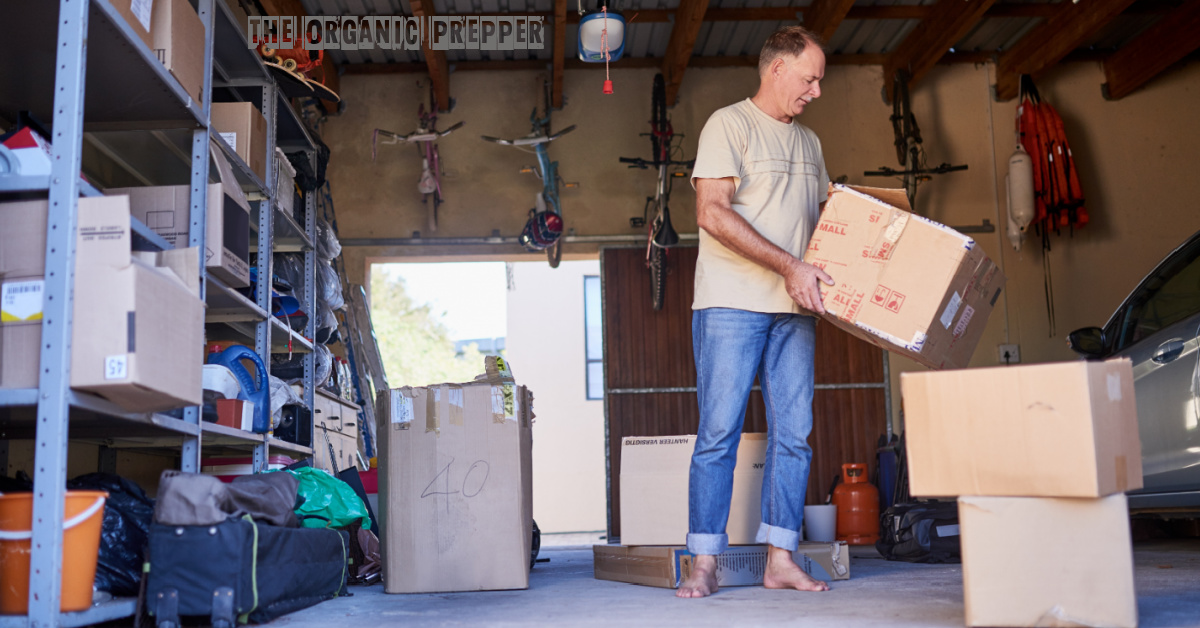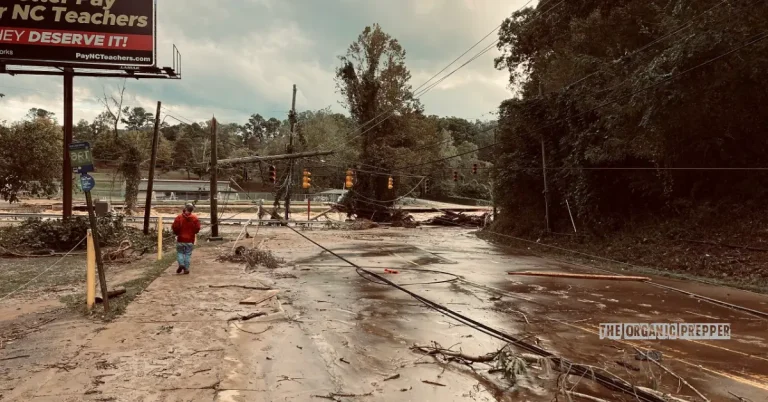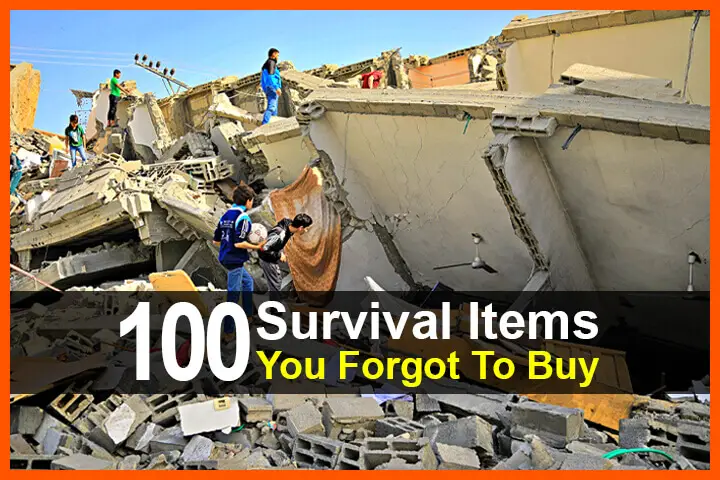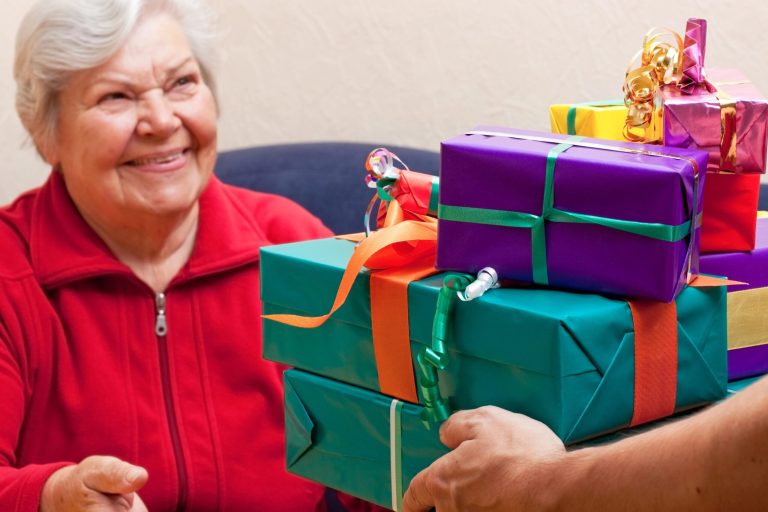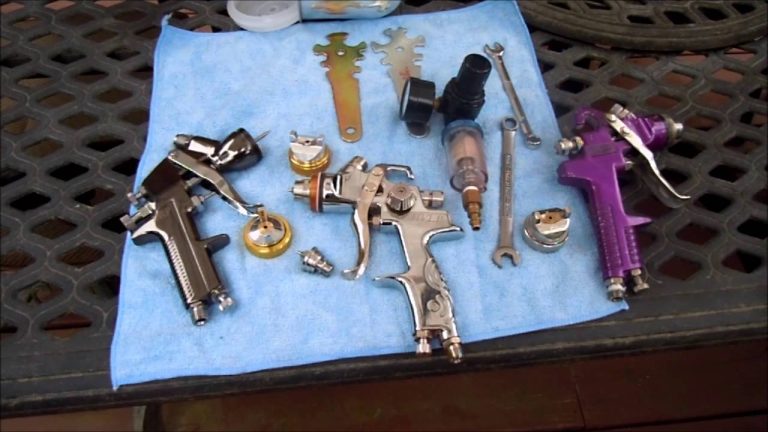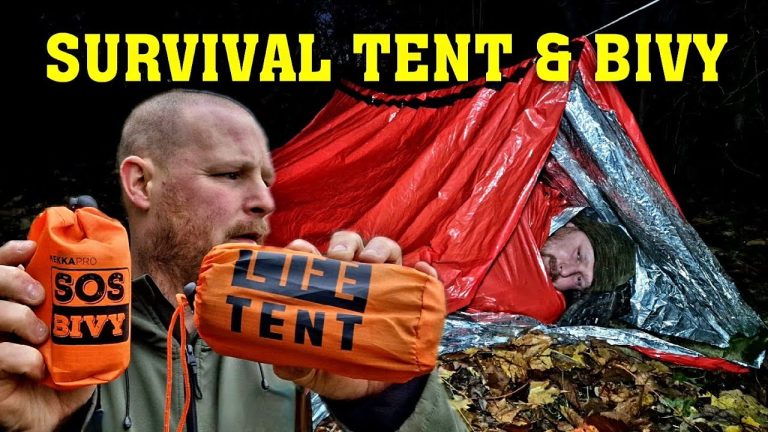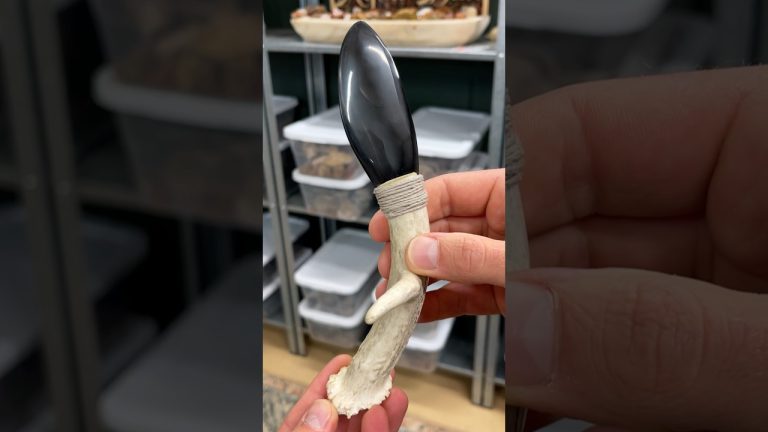(Psst: The FTC wants me to remind you that this website contains affiliate links. That means if you make a purchase from a link you click on, I might receive a small commission. This does not increase the price you’ll pay for that item nor does it decrease the awesomeness of the item. ~ Daisy)
Are you considering grabbing a copy of my new book, How to Prep When You’re Broke? Check out this excerpt from Chapter Five.
I want to talk about what’s in your closet.
The things that are tucked away, all but forgotten.
The stuff you bought on sale and forgot about. The things you only used once and then stashed away. The items at the back of the pantry, the clutter in the junk drawer, and the stash in the garage.
You probably have all sorts of preps already.
So before you go out and buy a bunch of stuff, you need to take a deep dive into your home and unearth your treasures. Nearly everyone has odds and ends on hand that, when organized, can form the backbone of a prepper stockpile.
If the last few chapters left you feeling overwhelmed and maybe a little bit defeated, I think you’ll feel way better after this one.
Let’s see what you’ve got!
Figure out what you’ve already got
I like to have my lists (the ones we made in the last chapter) close at hand and go treasure-hunting for preps. The way I generally get started is by attacking different storage areas in my house. One by one, I explore my closets, my junk drawers, my medicine cabinets, and my storage areas. I have an area in my home that I use as Command Central, where the preps I found will go. Currently, Command Central is my dining table.
I have a process that I use for this:
- I gather up cleaning supplies, a box for preps, a marker, a notebook and pen, and my lists.
- I pull everything out of the area I’m working on. For this example, let’s say we’re doing the hall closet.
- I lay my hands on every single item in that closet, going through any baskets and bins.
- If something is on one of my prepper lists, I put it in a box. You may want more than one box – for example, house and hygiene, power outage, pets.
- I wipe out the cabinets and shelves before I put things back in.
- I return the day-to-day use items, such as towels, bed linens, current cleaning supplies that are in use, the open container of kitty kibble, the nail file, etc., to their places.
- Everything that is a prep goes into its respective box and goes into my Command Central,
Now I’m left with a clean, organized closet and a stack of random preps I didn’t even know I had. Win-win!
Rinse and repeat
Go through every area of your house and do this, saving your kitchen for last.
Here are some areas to tackle:
Drawers with random contents
- Attics
- Basements
- Closets
- Baskets (I have baskets full of miscellany all over the place – maybe that’s just me?)
- Shelves
- Under the sinks in the kitchen and bathroom
- Medicine cabinets
- Garage
- Laundry room
- Sheds
Any place stuff might be stashed, go through it using the process above. Command Central is probably getting pretty full by now!
How to do a pantry inventory
Next is your pantry. To clarify, when I say pantry, I’m not just talking about the little closet off of your kitchen (if you have one – I don’t!) I mean wherever you store your food.
This is generally the biggest inventory you’ll do in most households.
#1 Pull out every bit of food in the house that doesn’t belong in the refrigerator.
Clear your counters and table and empty out your food storage areas completely. Now, while they’re empty, is a perfect time to clean out your storage areas. I like to clean areas that are going to store food with the most natural products possible. You can use vinegar and water or a non-toxic cleaning product. I’m a big fan of the Method brand or Mrs. Meyer’s brand. (Mrs. Meyer’s is expensive but wonderful.) Scrub everything down and then leave it open to air out while you’re organizing your stuff.
You won’t want to pull all of your freezer items out where they’ll thaw. Simply pull them out for long enough that you can write down what’s in the freezer and in what amounts.
#2 Sort it into categories
Now that you can see everything, it’s time to sort it out. Put similar items together. You might categorize something like this:
- Baking supplies
- Pasta
- Rice
- Boxed food like flavored pasta or rice dishes
- Canned meat like tuna or chicken
- Canned fruit
- Canned vegetables
- Crackers
- Cereal
- Jars with sauce (marinara, salsa, cheese)
- Cans of soup, stew, and chili
- Mixes (pancake, brownie, cake, etc.)
- Packets (gravy, stirfry seasoning, taco seasoning, etc.)
- Dried fruit
- Treats like cookies, chips, etc. (Items with little nutritional value)
- Granola bars
#3 Make a detailed list of what you have
Now that you have everything out, are you surprised by anything? Do you have more or less than you thought you might?
It’s time to put it all down in black and white. This probably won’t be your permanent pantry list, it’s just a starting point.
When you write down your quantities, do it in the way that makes the most sense to you. Some people like to use the weight, for example:
6 pounds of pasta
Others, myself included, like to quantify it in realistic serving sizes. By realistic, I mean a size your family members would actually consume at a meal, not the 1-ounce servings touted on the package.
24 servings of pasta
Quantifying by serving size doesn’t work with things like baking soda or flour – for those items, weight measurements will be the most accurate.
#4 Put things back in an organized fashion.
When you put things away, it’s good to keep them organized. I prefer to keep like items with like items. For example, I have a shelf with crackers, flour, rice, and pasta, keeping all my grains together. I have another shelf for protein items, one for fruits and vegetables, and a shelf for snacks. You get the idea.
Check things off your list
Now comes the gloriously satisfying part.
Remember all those lists you made of preps you need?
You get to go through your pantry inventory and the things in Command Central and CHECK SOME OF THEM OFF YOUR LIST. I can’t tell you what a rush this always gives me.
You probably found a random flashlight, some batteries, some tools, and perhaps a stash of first aid supplies. Some stuff will pull double duty. For example, decorative candles will light your way just as well as down-to-business plain white tealights.
How much of your list were you able to check off? I bet there’s less to buy than you thought! In fact, you may already have your two-week food supply in place. You may be halfway there for a power outage.
Next, we’ll take some time and organize our preps.
Create prepper kits
A common discussion around prepper tables is how and where to store all of your stuff. One method I like to use is making prepping kits that are geared to respond to certain types of emergencies or situations.
The best example of a prepping kit that almost every prepper has is a bug-out bag. (We’ll talk more about these later!) Our bags are geared toward providing us with what we need to survive for 24-72 hours away from our homes. In them, we keep food, water, filtration devices, lighting, navigation tools, emergency shelter supplies, and first aid gear. Because this is a standalone, contained set of gear organized for a specific purpose, we pare out the things that aren’t necessary for that type of emergency survival.
But you can easily expand the kit philosophy far beyond the bug-out bag. Not only do prepping kits help you to respond quickly, they also help you plug any holes you might have for a particular type of event. You can quickly find the things you need in one place instead of searching around in the dark with a flashlight clenched between your teeth.
Here are just a few examples of the prepping kits you can create. Use this as inspiration to make kits that are most likely to be needed in your setting, for your family
Power Outage Kit
I keep a power outage kit in my hall closet, where it’s easy to find even on the darkest night. The kit is kept in a Rubbermaid container with a lid. In it, I keep the following:
- Flashlight
- Headlamp
- Batteries
- Tealight candles
- Lighters
- Small indoor-safe emergency stove
- Fuel canister for the stove
I keep extra fuel canisters and candles elsewhere, but I always have the basics together so I can function. The goal is to keep all of your related things together so you have all the bits and pieces you need to handle things quickly and efficiently.
Water Kit
I have another kit in a decorative cabinet that resides in my front hall. This is where I store all things water-related. This prepping kit is larger but neatly stashed away, and like the other kit, it contains the basics. Extra supplies are stashed elsewhere.
In my water kit, I keep the following:
- A water bob for my bathtub
- Five 1-gallon jugs of water on the bottom shelf
- Iodine for treating water
- Pool shock for treating water
- A basin for doing dishes or washing produce
- A Sawyer Mini portable water filter
- A gravity fed water filter
The things you keep in your own water kit may vary and could also include things like testing strips for your well, a vessel for collecting water from an outside source, and other miscellaneous water-related supplies.
Tornado Kit
This is an example of a more regional kit a prepper might want to put together. Anyone who lives in tornado country knows that their immediate response could be the difference between life and death. When we had a house in a tornado-prone area, I kept my tornado kit in the part of the basement where we’d go if a twister was inbound. You might want to keep a similar kit in your storm shelter.
Here’s what we kept in ours:
- Helmets (any kind will do – including bicycle helmets, which are inexpensive and easy to acquire)
- Water
- Protein bars
- A blanket to throw over ourselves to protect from debris
- First aid supplies
- Sanitation supplies in case we’re trapped in there for some time
Your kit would vary based on where you live, how many people are likely to be sheltering, and any special needs you and your loved ones may have.
What kind of container should you use for your prepping kit?
You can use a variety of vessels for storing your prepping kits. Here are some examples of how I store my supplies.
- Stackable Rubbermaid Totes
- Suitcases slid under the bed
- Small, decorative cabinets that are dedicated to one specific type of prep
- A shelf in your pantry or hall closet
- A nightstand or side table with drawers
- A basket on a shelf
The sky is really the limit when it comes to places in which you can compile a kit. The main goal is to keep things that you might need together, together. Often when you use the kit philosophy, you duplicate certain supplies. For example, I have a Sawyer Mini in my home water kit and my bug-out bag, and I also keep one in my purse at all times. But two is one and one is none, right?
I prefer opaque containers for this purpose so that a casual glancer doesn’t spy my preparedness supplies.
You’ve accomplished so much!
If you’ve gotten to the end of this chapter and completed the tasks, I bet you’re feeling a sense of relief. I bet you aren’t nearly as far behind as you thought you were.
Seriously, bask in this feeling. Think about it: you accomplished this much without even trying. Imagine what you can achieve now that you’re focusing!
Get your PDF copy of How to Prep When You’re Broke today! Our name-your-own-price sale ends when Labor Day weekend does! Your purchase helps to support this website and help our message go further.







